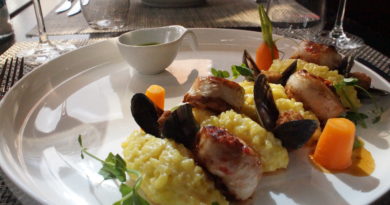Georgia, the oldest wine producer in the world
There is a popular song about Georgia from the Soviet era that says: « If you drink and you’re sad – You’re not a man, you’re not Georgian ».
For Georgians, wine is more than just a drink. The wine strengthens the national spirit and unites the guests during traditional Caucasian holidays. Wine is mentioned in Georgian legends, stories, and songs. It’s a true national treasure, that attracts tourists and sommeliers from around the world.
Georgia is one of the main grapevine cultivation in the world. In 2003, a study conducted by Patrick McGovern, a molecular archaeologist from the University of Pennsylvania, revealed that the earliest evidence for grapevine cultivation from the Middle East appeared around 6,000–5,800 BC during the early Neolithic Period at a place named Gadachrili Gora. Roughly 50km south of the Georgian capital, Tbilisi.
During the archaeological excavations in the burial grounds of the bronze age, pitchers with grape seed remnants, wine equipment – stone presses, wine presses, various wine vessels made of clay and metal, dating back to the 9th-10th centuries BC, were found.
Georgian table wines do not contain sugar. They have a slightly sour taste. Their wine collections are available only after ageing in Kvevri (special Georgian clay jugs) and bottled for ripening for 3-20 years.
In 2013, the traditional Georgian Kvevri wine-making method was recognized by UNESCO as part of the Intangible Cultural Heritage of Humanity. The making of wine in qvevri is the oldest known method of wine production and it was from Georgia that wine-making in qvevri spread to Mesopotamia, Egypt, Greece and beyond.
“The tradition plays a vital role in everyday life and celebrations, and forms an inseparable part of the cultural identity of Georgian communities, with wine and vines frequently evoked in Georgian oral traditions and songs. Knowledge of this heritage is passed down by families, neighbours and friends, all of whom join in the communal harvesting and wine-making activities” said the UNESCO back in 2013.
Wine is an inevitable part of the rituals during Georgian holidays and is also used in everyday life. Traditionally, wine drinking is a ritual, regardless of how accidental the event is..
One of the traditional ways to drink wine is from a special vessel named « Kanchi », which is a hollow goat horn. Regardless of the nature of the event, the most common way of drinking in Georgia is « bolo mde », which means « to the bottom ».
Each guest in a Georgian family, especially a foreigner, is offered wine made by the hosts or their relatives. The wine culture exists in all regions of Georgia for many years, therefore the tradition of making home wine is spread throughout the country, even in the big cities of Tbilisi and Batumi.




